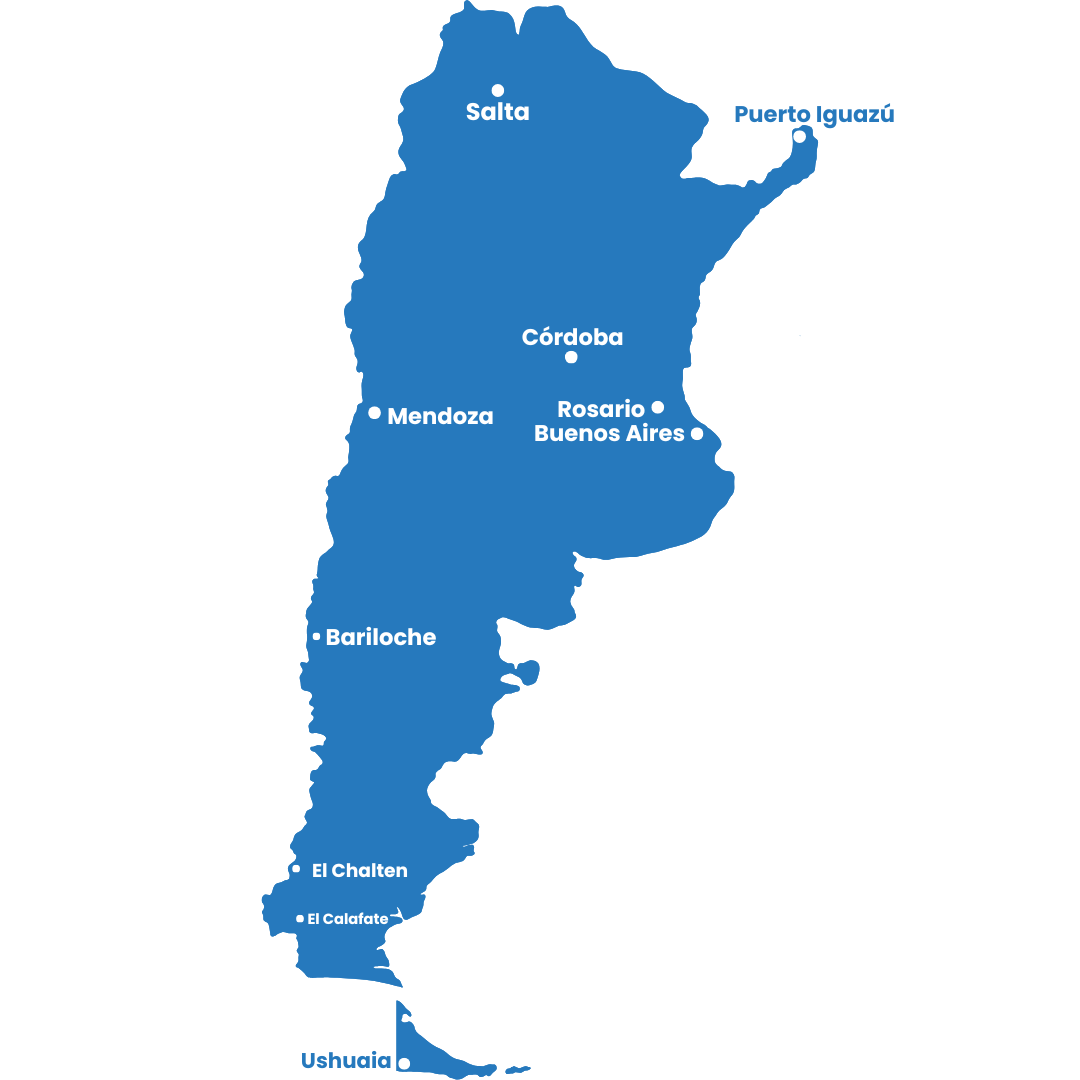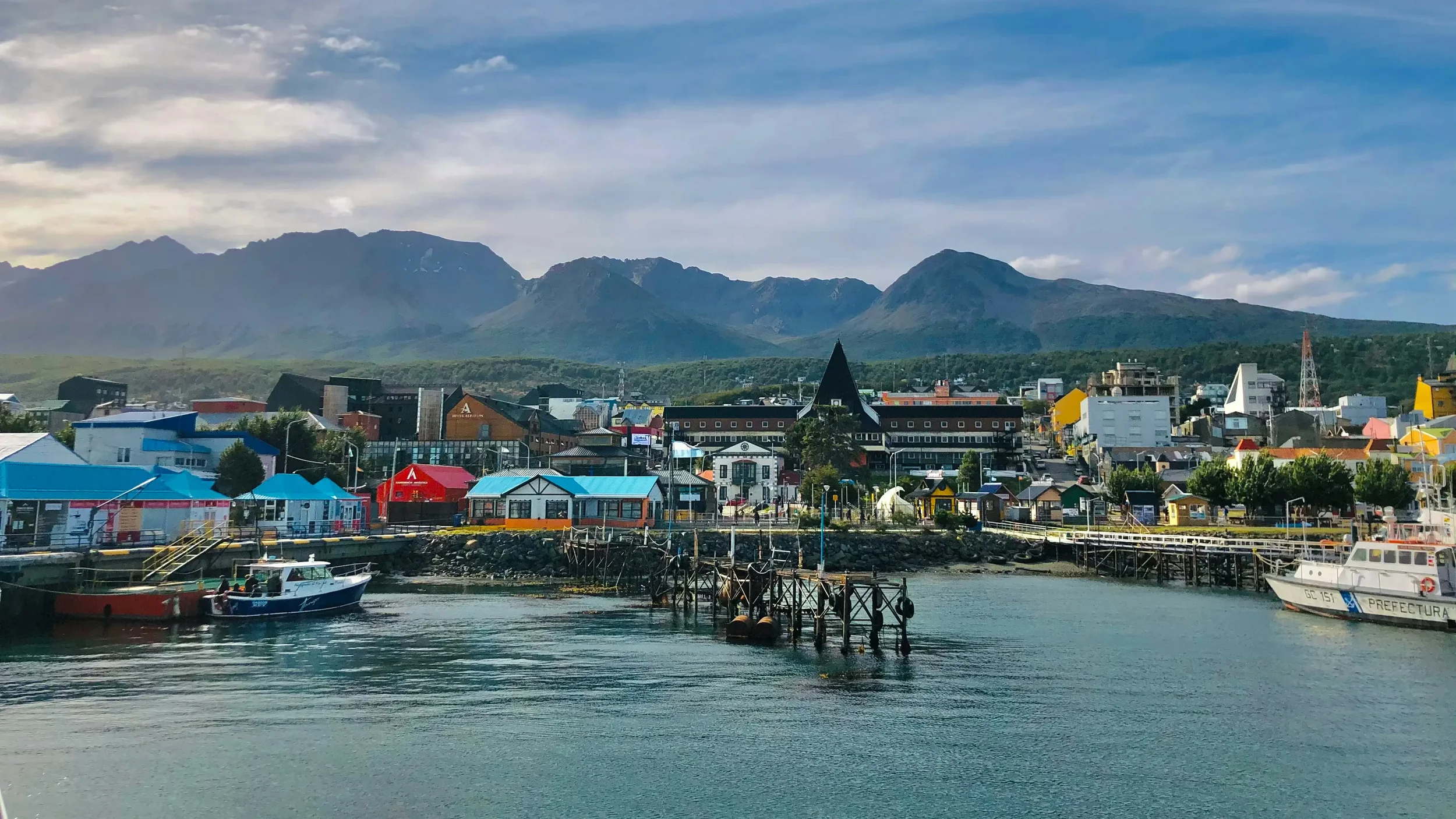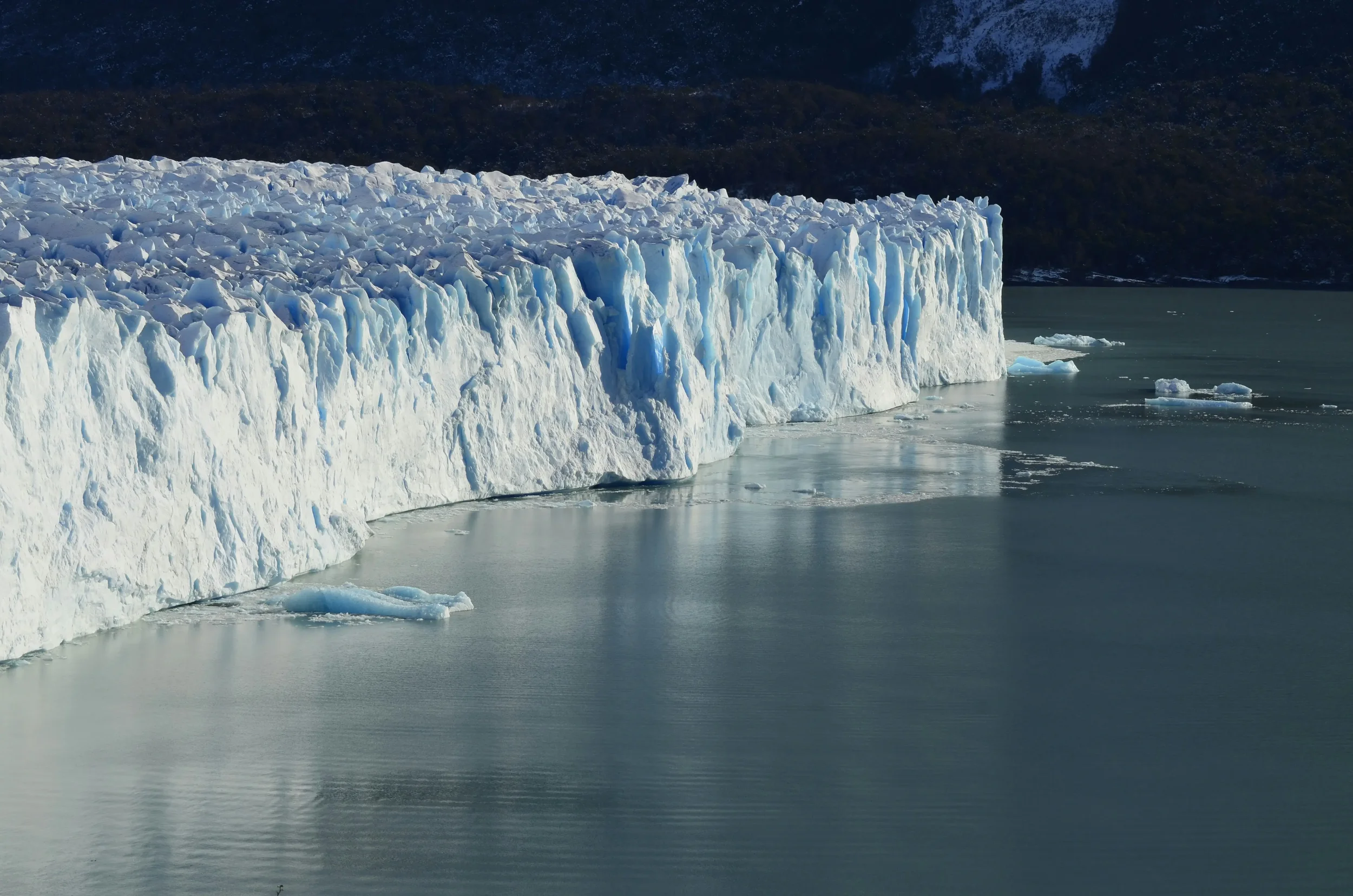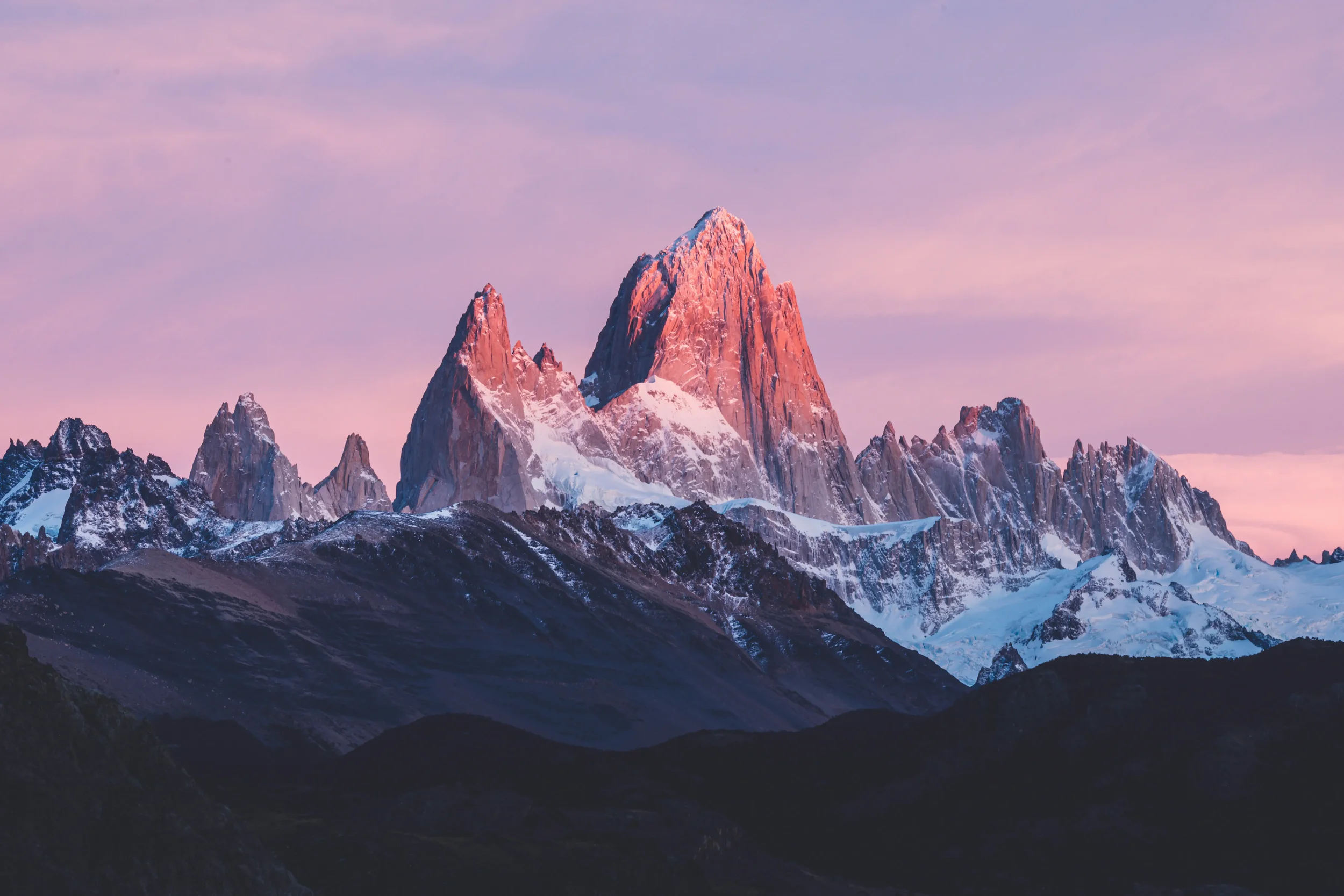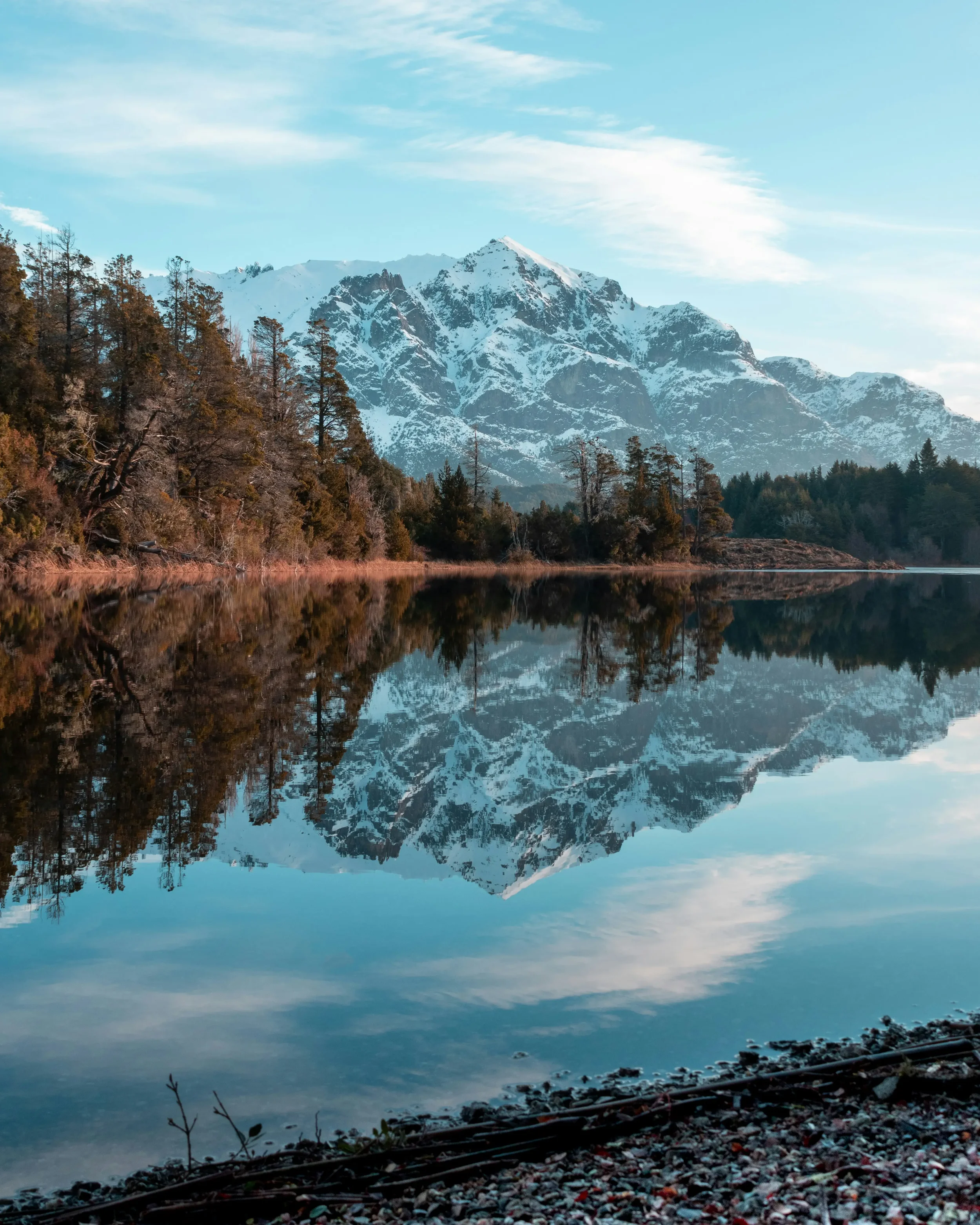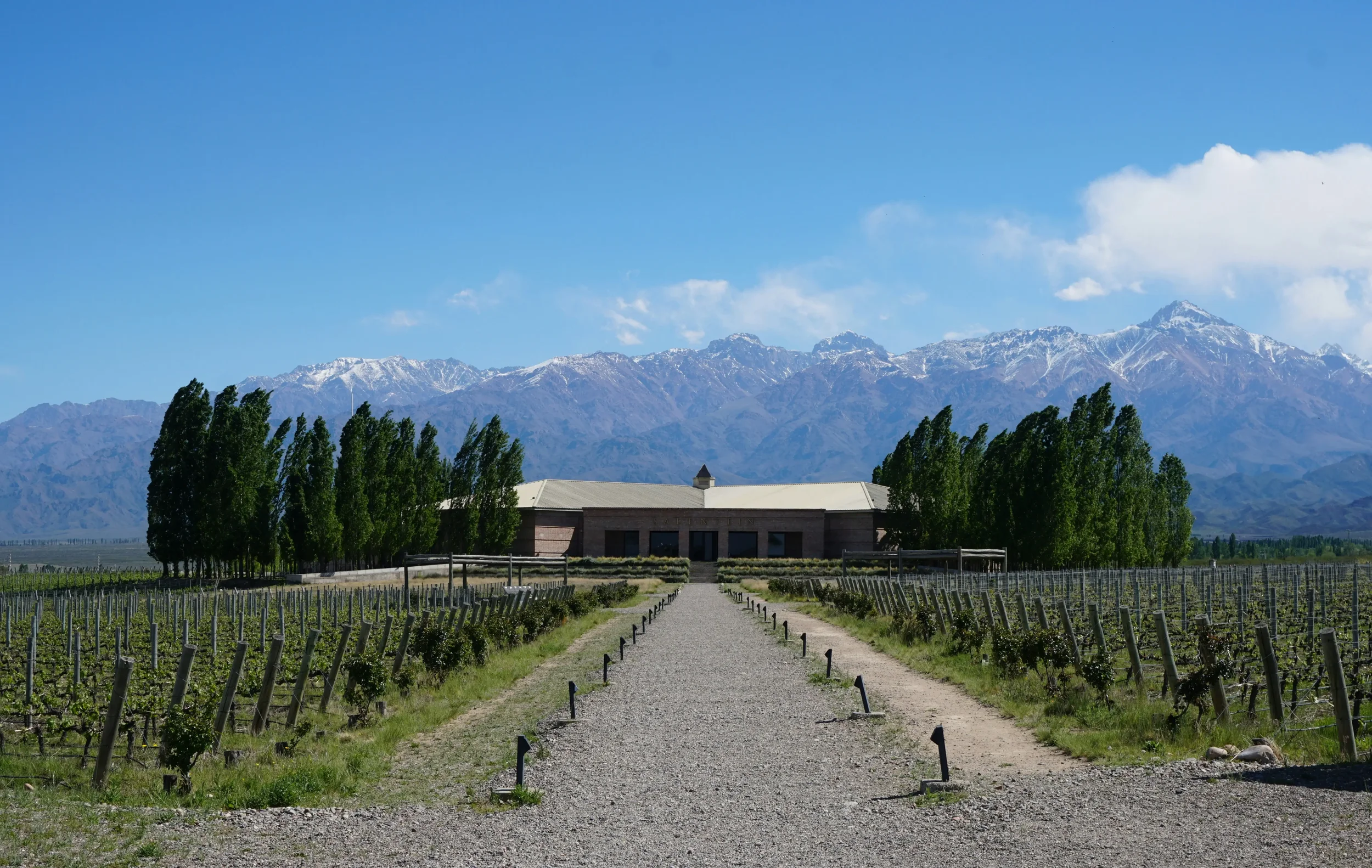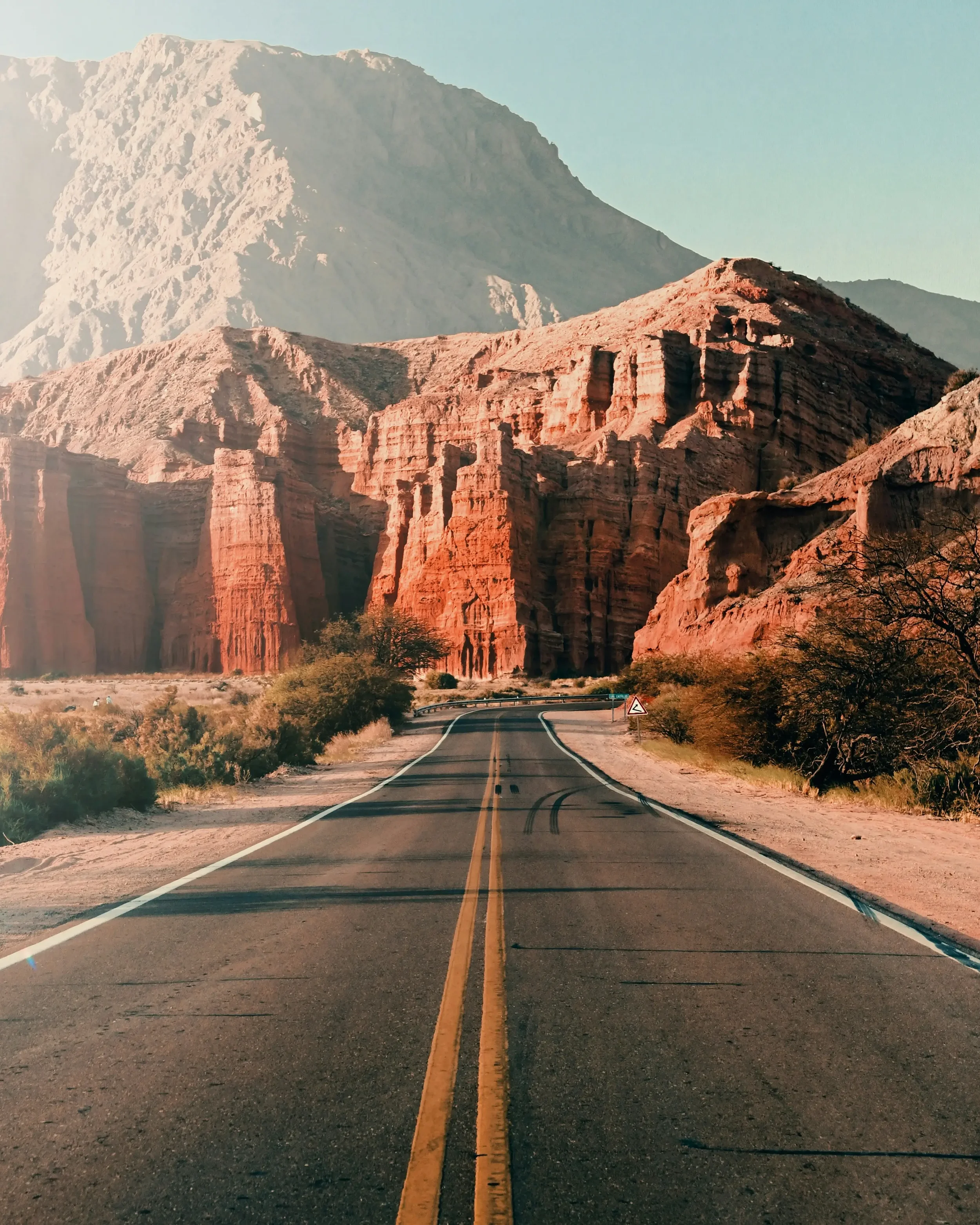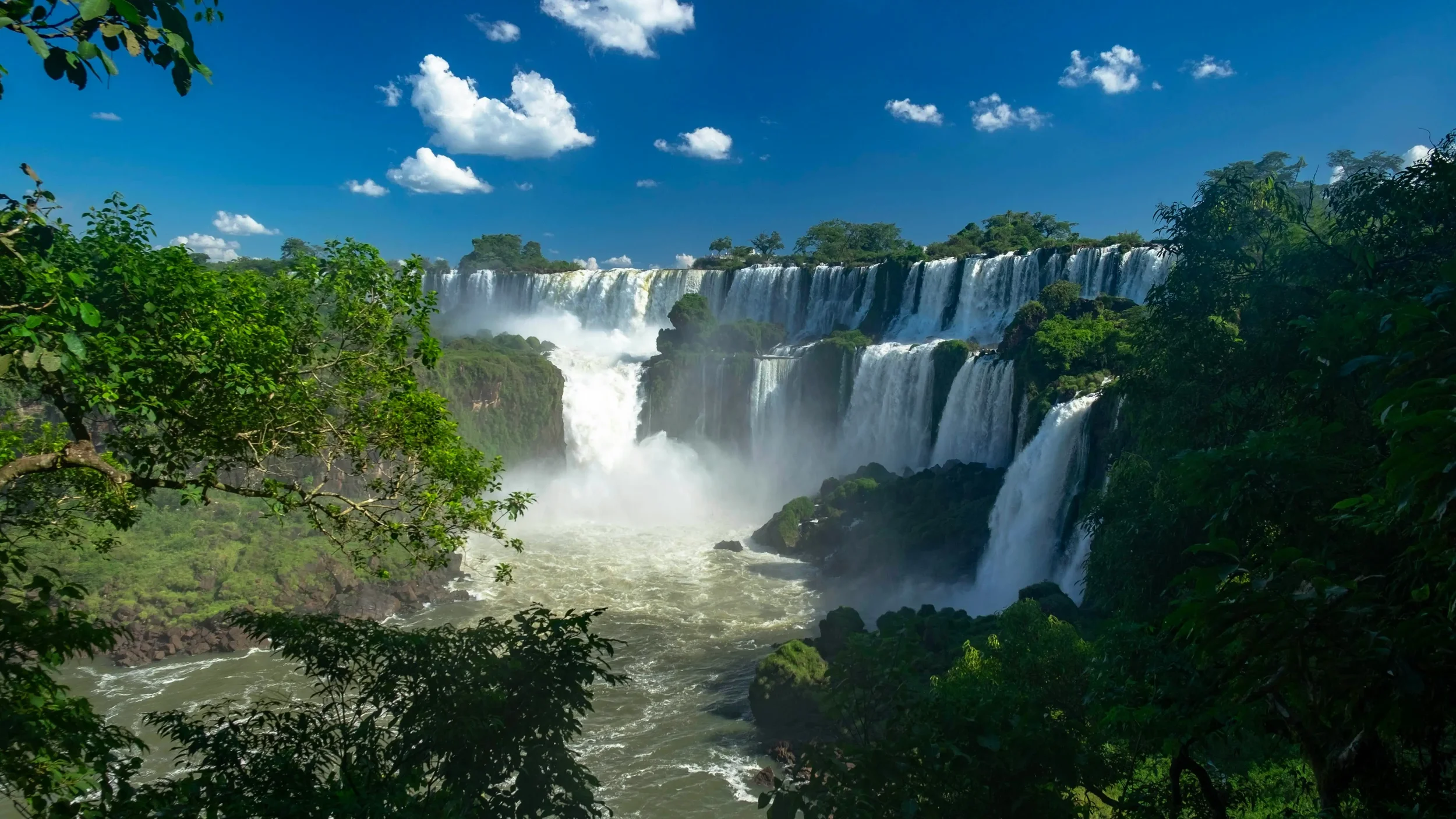ARGENTINA
-
Argentina is a land of passionate tango, juicy steaks, rich red wine, and jaw-dropping natural beauty. From the elegant chaos of Buenos Aires to the wild peaks of Patagonia and the roar of Iguazú Falls, it’s a country full of contrasts and big experiences.
Most journeys begin in Buenos Aires, a city alive with European elegance, bustling markets, and an undeniable artistic flair.
Beyond the capital, you can trek through glaciers and mountains in the far south, feel the spray of Iguazú up north, sip Malbec in Mendoza’s vineyards, or get a taste of gaucho life out on the Pampas. In between, you’ll find alpine towns like Bariloche, colorful canyons up in Salta, and wide open roads made for slow travel. Argentina’s size means the landscapes and the weather change fast, making every region feel like its own little world.
-
Argentina's vast latitudinal spread results in a wide range of climates, from subtropical in the north to subpolar in the south.
Overall Best Time to Visit: Due to its size, there isn't a single "best" time for the entire country. However, the shoulder seasons (spring: September-November, and autumn: March-May) often offer pleasant weather across many regions and fewer crowds than the peak summer months.
Regional Breakdown:
Buenos Aires & The Pampas (Central Argentina):
Summer (December - February): Hot and humid, with temperatures often reaching 30s°C (80°s-90s°F). This is peak tourist season, and prices can be higher.
Autumn (March - May): Mild temperatures and generally pleasant. Ideal for exploring the city.
Winter (June - August): Cooler, with temperatures dropping into the single digits Celsius (40s°F). Can be quite cold at night.
Spring (September - November): Pleasant temperatures, ideal for sightseeing.
Patagonia (South - El Calafate, Ushuaia, Bariloche):
Summer (December - February): Mildest weather, making it the best time for hiking and outdoor activities. Days are long. However, this is peak season, so expect higher prices and more crowds.
Shoulder Seasons (November, March): Still good for hiking, with fewer crowds and slightly lower prices. Weather can be more unpredictable.
Winter (June - August): Cold, with snow common, especially in the Andes. Many trails are inaccessible, but it's ski season in areas like Bariloche.
Iguazu Falls (North):
Year-round: Subtropical climate, hot and humid.
Summer (December - March): Falls are typically at their most voluminous due to heavy rainfall, but it's also the hottest and most crowded time.
Winter (June - August): Less heavy rainfall, still impressive, and generally more comfortable temperatures (60°s-70s°F).
Mendoza (West - Wine Region):
Year-round: Generally dry and sunny.
Summer (December - March): Hot days (80s°F), cooler nights.
Spring & Autumn: Pleasant temperatures, ideal for vineyard tours.
Winter (June - September): Cooler, but still sunny and good for visiting wineries.
Important Tip: If you're planning to combine different regions, research the best time for each and prioritize based on your main interests.
-
UK, EU & US passport holders:
Citizens from the UK, EU, and US generally do not need a visa for tourist stays up to 90 days. You will typically receive an entry stamp upon arrival.
Important Notes:
Passport Validity: Your passport should be valid for at least six months from your date of entry into Argentina, with at least two blank pages.
Proof of Onward Travel & Funds: While not always asked for, it's wise to have proof of onward travel and sufficient funds to cover your stay, as immigration officials may request it.
Visa Extension: It is possible to apply for a visa extension in Argentina if you wish to stay longer. This must be done at an immigration office before your initial 90-day period expires. Requirements typically include a valid passport, proof of sufficient funds, and a completed application form. Extensions are not guaranteed.
Overstay Fines: Overstaying your permitted period can lead to fines and may impact future entry into Argentina.
-
Currency: Argentine Peso (ARS)
Argentina's economy has been highly volatile, with significant inflation and fluctuating exchange rates. This means the actual cost of travel can change rapidly.
"Blue Dollar" (Dólar Blue): Historically, there has been an unofficial, "blue market" exchange rate that offers significantly more pesos for foreign currency (especially USD) than the official rate. While government policies attempt to control it, it can still exist and offer a better rate. Check reliable local sources or apps like "DólarHoy" for the current "blue" rate.
Best way to access money:
Bringing USD/EUR Cash: Due to the "blue dollar" rate, bringing clean, crisp USD (large denominations are often preferred) and exchanging it at reliable cuevas (unofficial exchange houses, often found in discreet locations) or with trusted individuals can yield a much better exchange rate than ATMs or official exchange houses. Ask locals or your accommodation for recommendations.
Travel Cards (with caution): While cards like Revolut or Wise offer good rates for direct purchases, ATM withdrawals typically use the official exchange rate and come with high fees and low withdrawal limits. This often makes cash exchanges more favorable.
Credit/Debit Cards: Widely accepted in larger cities and tourist areas, but transactions on foreign cards will use the official exchange rate. Check with your bank about foreign transaction fees.
MercadoPago: A popular local payment app. While convenient, setting it up as a tourist without a local bank account might be challenging.
Typical daily backpacker budget: ARS 25,000–50,000/day (approx. $25–$50 USD, highly dependent on exchange rate) – This can cover budget hostel dorms, street food or bodegones (local eateries), public transport, and some free activities. Costs for Patagonia and popular tours will be higher.
Tips:
Cash is King (with the Blue Dollar in mind): For better value, carry a good amount of USD or EUR cash (large bills like $100 USD are best).
Subte (Subway) & Buses: Public transport in Buenos Aires is excellent and incredibly cheap. You'll need a "SUBE" card to ride, which can be purchased and topped up at kiosks.
Eat Local: Look for bodegones or parrillas (steakhouses) frequented by locals for more authentic and affordable meals. Empanadas and choripán (sausage sandwich) are great budget options.
Camp: In certain regions like Patagonia, camping can significantly reduce accommodation costs.
Budget Airlines: For long distances, domestic budget airlines like FlyBondi and Jetsmart can sometimes be cheaper than long-distance buses, but be aware of baggage fees and potential delays/cancellations.
Don't exchange at airports/hotels: They offer the worst rates.
Main Destinations


